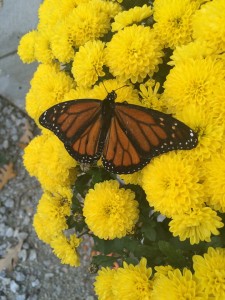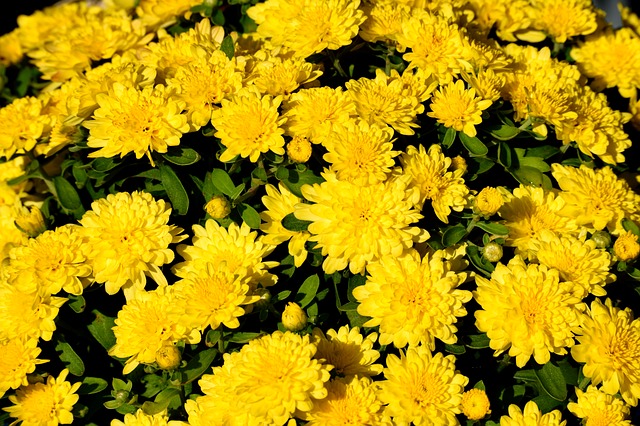On deadheading and discoveries
The last time Tom and I went to a home improvement store, we bought a container of yellow mums in the garden department. The official start of Fall was only a few weeks away, and that yellow mum looked like sunshine and happiness bursting out of a terracotta pot.
For the first two weeks, the yellow mum beamed its cheery sunshine at me every time I took the dogs to the backyard. But a few days ago, it began to change. A few of the blooms wilted and turned an anemic shade of pale yellow followed soon after by a dirty brown. Some even shriveled into dry, blackened corpses.
So, I did the thing my mother taught me to do when blooms become bleak. I began to deadhead. Just in case you haven’t heard the term used as a verb, I’ll explain. When you deadhead a plant, you pinch off the dead flower “heads” and throw them away. Experts say deadheading encourages plants to put on new growth and bloom again.
Here’s a weird thing I’ve discovered during these past few days of deadheading. It feels good. Somehow, it even feels “right.” I pinch one of the wilted blooms at its base, and it pops off easily, making a soft snapping sound when it does. (You know that oddly satisfying feeling you get when you pinch a piece of bubble wrap? It’s like that, only with brownish blooms instead of air bubbles.)
The way the wilted flowers release without a fight makes me think they’re destined to be discarded – as if they know it’s time to make room for new blooms. Every day this week, I’ve deadheaded a few more flowers and noticed the tiny green buds forming underneath. Soon they’ll take their turn as the showy yellow flowers beckoning us into the backyard. They’ll have their moment in the sun, literally and figuratively.
Over the years, I’ve learned so much from other people and from different experiences and, dare I say it, even YouTube. (A three-minute YouTube video taught me how to fix my vacuum cleaner last week which proves that, sometimes, you really can believe what you see on the Internet.)
But some of life’s best lessons are illustrated in the natural life happening all around us – every single day. Ants teach work ethic. Bees know how to work as a team. Caterpillars know that struggle is a natural part of transforming into something as beautiful as a butterfly.
Even plants understand they can’t fight the passage of time. So, they let go of what’s no longer working so they can put their energy into new growth, new blooms, new creations.
It makes me wonder if we should all “deadhead” our days, our routines, and – by extension – life as we know it. If we prune the problems and bad habits we’ve been slow to let go of, we might be blown away by what blossoms in their absence.
Perhaps we should take a lesson from our mums. Pinch. Pop. Bloom.
Gwen Rockwood is a syndicated freelance columnist. Email her at rockwoodfiles@cox.net. Her book is available on Amazon.

